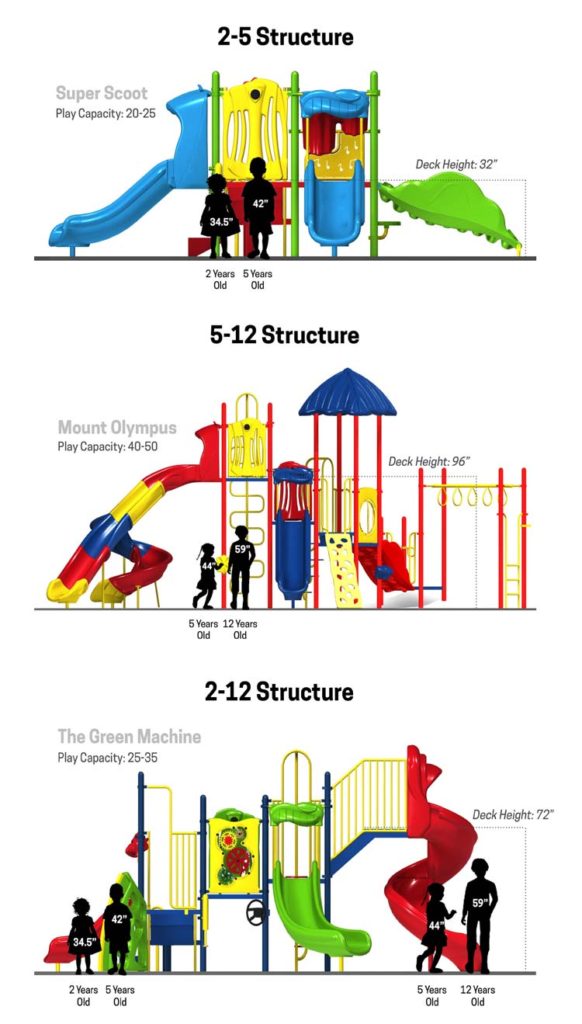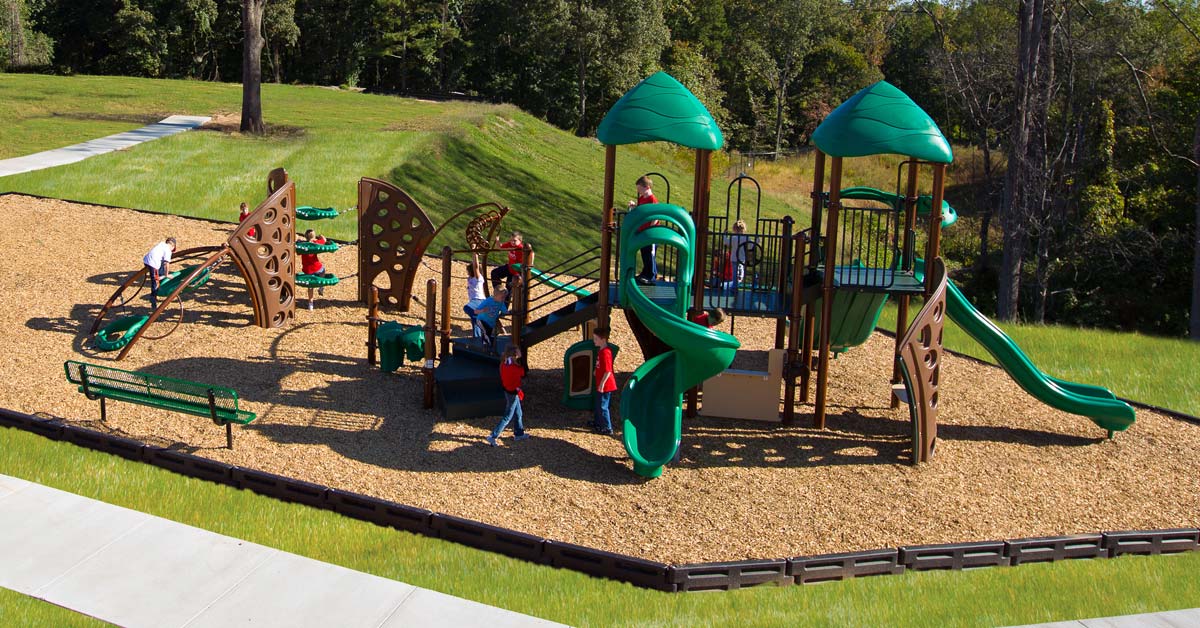Choosing the right playground size that fits your space and can accommodate everyone can be tricky. Buying an overly large playground structure is a surefire way to burn through your budget. Furthermore, it doesn’t always guarantee that children will get more enjoyment out of your playground. We have compiled our design teams’ top tips for making sure you install a playground that is sized just right.
Why is Playground Size so Important?
Sometimes bigger really is better. High enrollment schools, military bases and communities frequently need a large playground. This is especially true of areas that draw crowds to the area with parades, fairs and other large events. Installing the wrong playground size can be dangerous, as children will struggle to utilize the equipment without moving into the path of other children.
Overly large playground size can seem empty even during the busiest times fail to engage children in interactive play and can feel isolated. Playgrounds should provide opportunities for children to play together as well as independently to be considered truly successful. An unnecessarily large or poorly laid out playground can also make it more difficult to supervise children.
A well designed space will be able to accommodate everyone. Additionally, the right playground size encourages cooperative play by placing children in close proximity and utilizing collaborative components. This will give everyone plenty of room to stretch their legs while encouraging children to play side by side. During the busiest times, your playground shouldn’t feel empty nor should it feel crowded.
Understand Playground Size Basics

To determine the right capacity for your playground size you should know how many children you intend to serve. Schools and churches have an advantage since they often know how many children will use their playground at one time. Communities and HOAs should consider how many residences are within walking and biking distance as well as how many other playgrounds are in the area. If your community lacks park facilities, plan on building your playground to accommodate more children. If there are several other parks nearby, assume that only the families living closest will frequent your park.
As a rule of thumb, the National Resource Center for Health and Safety in Child Care and Early Education recommends at least 75 square feet of total outdoor play area for each child over 2 years of age using a playground at one time. For children under two the recommendation is at least 50 square feet. For children under 18 months, the minimum drops down to 33 square feet. This is just one of the many reasons that playground size should be separated by age if at all possible.
Make Smart Design Choices
A well planned playground size will rely on providing children with a great diversity of activities. You can accomplish this goal in any space and with any budget. Large playgrounds may require several similar activities. You can incorporate multiple slides and climbing apparatuses, and the ratio of equipment to children will remain balanced – even filled to capacity. When planning a larger structure with multiple features in the same category you can increase the diversity of equipment by selecting equipment that focuses on different muscle groups. This ensures that the children get a good workout and that your structure doesn’t feel repetitive.
With these considerations in mind, you can focus more on the quality of your playground. Don’t assume that the children in your community need a huge playground to have a great time. Do you currently have a small community but know you will be experiencing growth over a few years? You can choose to have a larger playground size design and build it out in stages as you grow!
